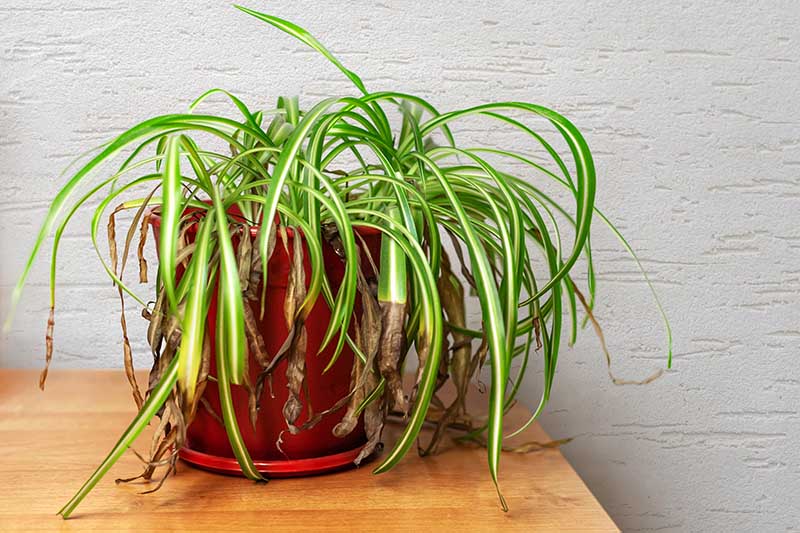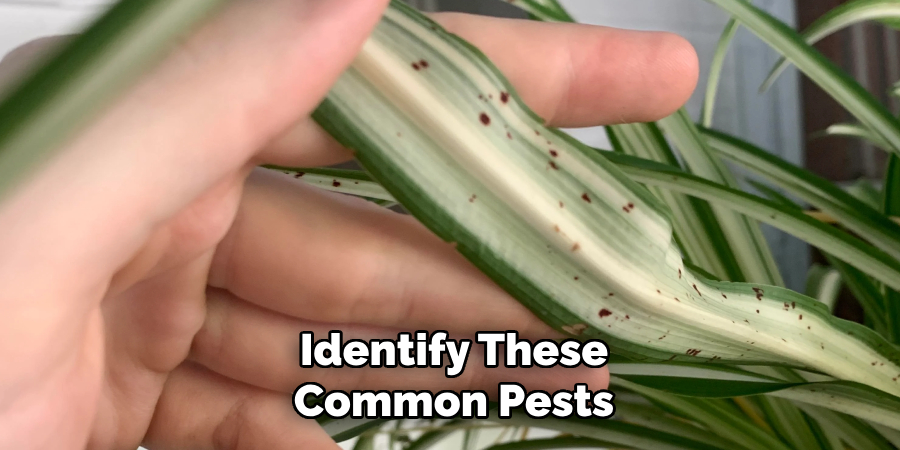To save a spider plant, ensure it receives indirect sunlight, water it consistently, and avoid overwatering. Spider plants thrive in well-draining soil.
Spider plants are popular indoor plants known for their long, arching leaves with white striped edges. Not only do they add a decorative touch to any space, but they are also easy to care for, making them ideal for beginners and busy individuals.
To keep your spider plant healthy and vibrant, it is important to provide it with the right conditions. This includes placing it in an area with indirect sunlight, as direct sun can scorch its leaves. Additionally, make sure to water the plant regularly, allowing the soil to dry out slightly between waterings. Overwatering can lead to root rot, so it is important to strike the right balance. By following these simple steps, you can enjoy a thriving spider plant in your home or office space.

Credit: gardenerspath.com
How to Save a Spider Plant: Step by Step Guide
Understanding Spider Plants
Spider plants are popular and resilient houseplants that are known for their long, arching leaves. These plants are easy to care for and make a great addition to any indoor space. One key characteristic of spider plants is their ability to produce small “pups” or baby plants, which can be separated and propagated to create new plants.
Despite their hardiness, spider plants can face some common issues, such as browning or yellowing leaves and root rot. To save a spider plant, it’s important to understand its needs, which include providing bright, indirect light, well-draining soil, and regular watering.
Additionally, maintaining a consistent temperature and humidity level can also help keep spider plants healthy. By following these guidelines and giving your spider plant proper care, you can ensure its longevity and enjoy its vibrant green foliage in your home.
Diagnosing Spider Plant Problems
Spider plants are known for their easy care and resilience, but they can sometimes encounter problems. If your spider plant is showing signs of distress, it’s important to identify the cause. There are a few common issues that can affect spider plants such as pests infestations.
Look for any unusual spots or discoloration on the leaves, as well as wilting or drooping. Inspect the plant closely for any signs of pests like spider mites or aphids. These tiny insects can cause damage to the leaves and sap the plant’s energy.
If you suspect an infestation, take immediate action to address the problem and prevent further damage. Regularly inspect your spider plant for any signs of distress and take appropriate measures to save it.
Nursing A Struggling Spider Plant
Spider plants are known for their ability to thrive in various conditions. To save a struggling spider plant, it is important to assess the lighting and temperature it is exposed to. Ensure the plant is not in direct sunlight and adjust the lighting accordingly.
Spider plants prefer temperatures between 60-75 degrees fahrenheit. Proper watering techniques are crucial, allowing the soil to dry out between waterings. Using well-draining soil and repotting when necessary can also aid in the plant’s revival. Spider plants thrive in slightly acidic soil, so choosing the right soil mix is essential.
By following these steps and providing the necessary care, you can nurse a struggling spider plant back to health and watch it thrive once again.
Propagation And Growth Techniques
Spider plants are easy to propagate using methods like seeds, plantlets, and cuttings. Propagation from seeds involves planting them in well-draining soil, while plantlets can be separated from their parent plant and rooted individually. Cuttings can be taken from the mother plant and placed in water or soil to encourage root growth.
Caring for spider plant babies requires keeping the soil moist but not waterlogged, providing them with bright but indirect sunlight, and avoiding over-fertilization. To encourage healthy growth and development, it’s important to regularly prune brown or damaged leaves, provide good air circulation, and avoid extreme temperature fluctuations.
By following these propagation and growth techniques, you can successfully save and care for your spider plants.
Common Spider Plant Pests And Diseases
Spider plants are prone to various pests and diseases that can affect their health and growth. It’s important to identify these common pests to effectively treat and prevent any issues. Natural remedies can be used to combat spider plant pests and keep them healthy.

Additionally, it’s crucial to take preventive measures and provide proper care to avoid the occurrence of diseases. Regularly inspecting the plant for any signs of pests or diseases and taking prompt action is essential. By following these guidelines and using appropriate remedies, you can save your spider plant and promote its overall well-being and longevity.
Spider Plant Care: Tips And Tricks
Spider plants are easy to care for. To ensure their thriving, provide them with bright, indirect light. When watering, make sure the soil is properly drained before giving them a thorough soak. Spider plants are susceptible to root rot, so avoid overwatering.
As for fertilization, feed them once a month during the growing season with a balanced liquid fertilizer. Overfeeding can lead to brown tips on the leaves, so be cautious. Adhering to these tips and tricks will help you save and maintain your spider plant’s health.
Spider Plant Troubleshooting
Spider plants are easy to care for, but they can encounter some issues. If the leaves are drooping or wilting, it may be due to overwatering or underwatering. To resolve this, water the plant when the top inch of soil feels dry.
If the leaves are yellowing or browning, it could be a sign of too much direct sunlight or lack of nutrients. Move the plant to a spot with indirect or filtered sunlight and fertilize it regularly. Leaf spot and other discoloration issues may occur if the plant is exposed to cold drafts or if it’s not getting enough humidity.
Keep the plant away from windows or doors and mist it regularly to increase humidity. With proper care and attention, you can save your spider plant and keep it looking healthy and vibrant.
Spider Plant Faqs
Spider plants are popular houseplants known for their ease of care and ability to thrive in a variety of conditions. While they primarily prefer an indoor environment, spider plants can survive outdoors, as long as they are protected from extreme temperatures.
Fertilizing spider plants is important for their growth, and they should be fertilized every two to four weeks during the growing season. However, be careful not to over-fertilize, as this can lead to burned roots. Spider plants can also be grown in water, making them an excellent choice for hydroponic gardening.

Simply place the plant in a container of water and ensure the roots are submerged. Regularly change the water to prevent stagnation and provide fresh nutrients. By following these simple guidelines, you can easily save and care for your spider plant.
Frequently Asked Questions For How To Save A Spider Plant
How Often Should I Water A Spider Plant?
Spider plants should be watered approximately once a week. Check the soil moisture level before watering, and make sure the top inch of soil is dry. Overwatering can lead to root rot, while underwatering can cause leaves to wilt. Maintain a regular watering schedule to keep your spider plant healthy.
How Do I Propagate A Spider Plant?
To propagate a spider plant, remove one of the small plantlets that form on the mother plant. Plant it in a small pot with well-draining soil and keep it moist. Place the new plant in a bright area, away from direct sunlight.
With proper care, the new spider plant will continue to grow and thrive.
How Can I Revive A Dying Spider Plant?
To revive a dying spider plant, first check for any signs of pests or diseases. Remove any affected leaves or parts of the plant. Next, adjust the watering schedule and make sure the plant receives adequate sunlight. Consider repotting the plant in fresh soil and fertilize it regularly.
With proper care, the spider plant should begin to recover.
Conclusion
Taking care of a spider plant doesn’t have to be complicated. By following a few simple steps, you can help your spider plant thrive and grow beautifully. Remember to provide the right amount of light, water consistently, and keep an eye out for any signs of pests or diseases.
Regularly repotting and fertilizing the spider plant will also contribute to its overall health. Additionally, don’t forget to give it a little love and attention by removing any dead leaves or debris. With a little bit of effort and patience, you’ll be rewarded with a flourishing spider plant that will bring life and beauty to your indoor space.
So go ahead and give it a try – you won’t regret it! Happy spider plant parenting!

